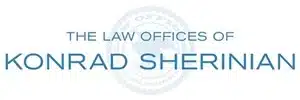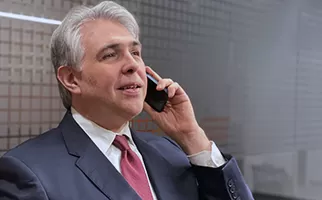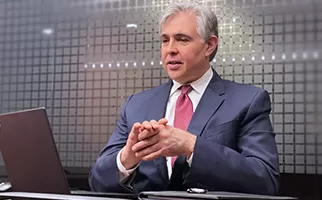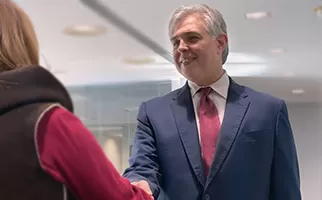INTERNATIONAL PATENT PROTECTION
International protection of your idea or invention is important to consider in the global economy.
Almost every country in the world recognizes some type of patent protection, although only a small subset allow for protection as extensive as can be obtained in the United States. Nonetheless, non-US patents can be extraordinarily valuable.
International patent protection can be extremely valuable; for example, Chinese Courts have recently granted verdicts of $48 million and $7.4 million. However, international patent protection can also be extremely expensive – the cost of the translations required to obtain protection around the world for a simple invention can be $100,000 or more.
We recommend that our clients take a targeted approach to obtaining patents outside of the United States, and, in many cases, delay their expenditures for international patent protection as long as possible. For example, for example, most countries are are signatories to the Patent Cooperation Treaty (“PCT”), and filing a PCT application within one year of your filing (generally on the last possible day), grants an additional eighteen months to choose which countries you wish to pursue patent protection in. Accordingly, filing a PCT application grants you thirty (30) months to assess the value of the invention prior to having to file national applications. Notably, Argentina, Taiwan, Saudi Arabia and Iran are not signatories of the PCT.
When the time comes to file national applications, decisions will have to be made in which nations to file. In addition, certain international treaties effectively allow for the filing of a single application that applies to a number of countries. For example, filing an application in accordance with the European Patent Convention (EPC) will result in a single examination before the European Patent Office (EPO). When the EPO approves the application, however, national patents in all designated states will be issued on payment of the appropriate issue fees. This can be far less costly than pursuing separate patents in all European countries.
There are a number of other such organizations, each of which has different member states, and operates according to different rules. Below is a partial list:
1. The African Regional Intellectual Property Organization
2. Organisation Africaine de la Propriété Intellectuelle
3. Eurasian Patent Organization
4. The Patent Office of the Cooperation Council for the Arab States of the Gulf
In most cases, irrespective of whether an application is made directly to a particular State or through an appropriate International Patent Organization, once a patent is allowed, an issuance fee must be paid for each State. After a patent is issued from a particular State, the patent holder has the right to enforce the patent in accordance with the laws of the issuing State.
There are two options to obtain protection in foreign countries based on a U.S. Patent Application:
1) within one year of filing a U.S. Patent Application you can file a foreign application in any country that is a signatory of the Paris Convention that claims priority to the earlier filed U.S. Patent Application;
2) within one year of filing a U.S. Patent Application you can file an application pursuant to the Patent Cooperation Treaty that allows you to delay filing foreign applications for an additional eighteen (18) months (in most countries).
For more information, see these other links:
Filing an Application Under the Paris Convention
Foreign Patent Protection
Experienced Patent Attorneys
The attorneys at the Law Offices of Konrad Sherinian have extensive experience in patent matters. We’ve helped clients obtain numerous patents, including more difficult categories such as software, electronics, and the mechanical arts. We have obtained numerous patents in the United States and throughout the world. In addition, we have litigated patent cases on behalf of both plaintiffs and defendants in District Courts throughout the United States.
Let’s Talk About Your Invention
Phone Consultation
Find it easier to talk rather than write? Have a lot of questions you want to ask? Let's talk over the phone.
Virtual Consultation
Need to share something on screen with us? Like to see who you are working with? Let's get online.
In-Person Consultation
Prefer a face-to-face and a handshake? We have offices in Chicago or Naperville, Illinois.
Whether you are at the initial starting stage, or trying to protect and enforce what you’ve already have, we can help patent and protect your idea or invention. Reach out to us today. We will quickly set up a time to discuss your intellectual property with an experienced patent attorney.
Available 24/7
Patent 101
Watch Our Video
Here’s a short video describing an overview on patents. It covers a lot of the basics, including the three main types of patents:
-
- Utility Patents
- Design Patents
- Plant Patents
Call for a Consultation
(630) 318-2606
Patent FAQs
Here’s a list of the most frequently asked questions about patents. Open each to see our pages dedicated to that topic.
How long does it take to get a patent in Chicago?
The timeline varies depending on the type of patent and the USPTO’s backlog. On average, utility patents take 1-3 years, while design patents are typically processed faster.
What is the cost of filing a patent?
Patent costs vary based on complexity. A utility patent can range from $5,000 to $15,000+, including USPTO and attorney fees. Design patents generally cost less.
Can I enforce my patent if someone infringes on it?
Yes, patent owners can legally enforce their rights and may file lawsuits in federal court for injunctions or damages. A patent attorney can help navigate the process.
What is the difference between utility and design patents?
- Utility Patents protect the functionality of an invention (valid for 20 years).
- Design Patents protect the appearance (valid for 15 years).
Do I need a patent attorney to file a patent?
While not required, working with a patent attorney significantly improves your chances of success, ensuring a strong, well-drafted application and USPTO compliance.
How do I check if my invention is already patented?
A patent search helps determine if an idea is novel. You can search the USPTO database, but a comprehensive attorney-conducted search provides the most reliable results.




